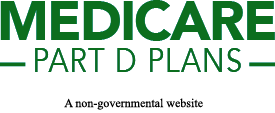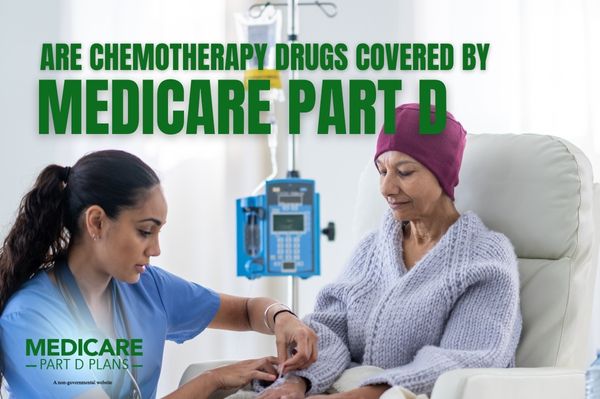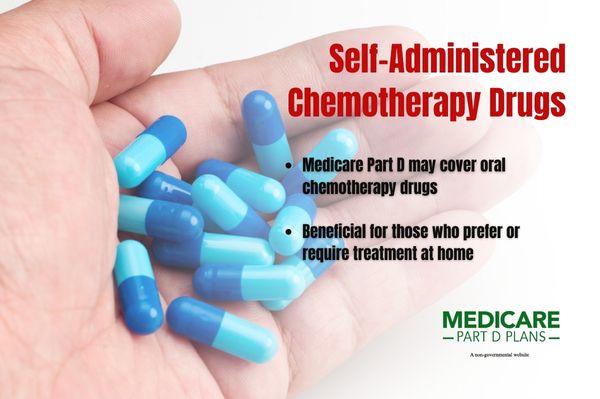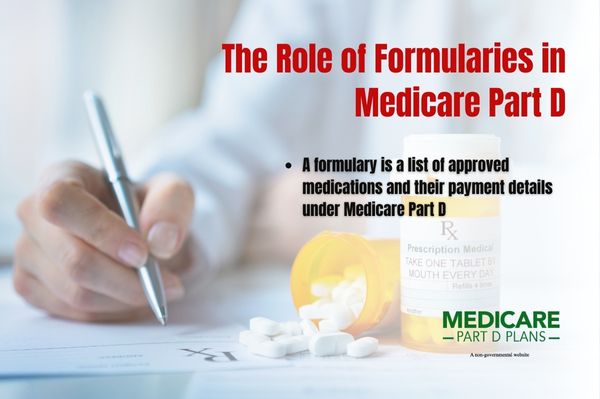Find a Medicare Part D prescription drug plan

Medicare Part D
Prescription Drug Coverage 2026
Are Chemotherapy Drugs Covered by Medicare Part D
If you’re wondering whether chemotherapy drugs may be covered by Medicare Part D, the short answer is yes, but it depends on the type of drug and how it’s administered. Oral chemotherapy medications might be covered, while those administered in a healthcare facility may only be covered under Medicare Part B.
This article will break down what you need to know about chemotherapy drug coverage and what you should consider when selecting a Medicare plan.
Key Takeaways
- Medicare Part D could provide financial assistance for prescription medications, which may include self-administered chemotherapy drugs, which could potentially improve accessibility for cancer patients.
- Coverage for chemotherapy drugs might vary based on whether they are self-administered or facility-administered, with specific rules under Medicare Part A and Part B for different treatment scenarios.
- It’s essential for beneficiaries to thoroughly check their Medicare Part D plan’s formulary to ensure necessary medications may be covered and to consider available financial assistance programs to help alleviate treatment costs.
Medicare Part D Overview
Medicare Part D may help pay for certain prescription medicines and will likely be a vital component of Medicare coverage. It could potentially reduce the financial burden of prescription drugs, possibly making it easier for beneficiaries to afford necessary medications.
Enrolling in Medicare Part D plans could provide financial assistance for medications, which could be helpful for those managing chronic conditions or undergoing treatments like chemotherapy.
With a wide range of drugs and treatments covered, Medicare Part D could potentially ensure that beneficiaries have access to the medications they need.
Understanding the various nuances of Medicare Part D could help beneficiaries make informed decisions about their healthcare. This knowledge may be particularly crucial for cancer patients who require costly chemotherapy drugs and related treatments.
Coverage of Chemotherapy Drugs under Medicare Part D
When it comes to chemotherapy drugs, Medicare will likely have specific guidelines determining coverage. Medicare Part D will likely cover various medications, such as those related to chemotherapy. Anti-nausea drugs, if not administered by a doctor within the specified timeframe, may also be covered under Part D.
Chemotherapy drugs can be categorized into self-administered and facility-administered. However, each type will likely have different coverage rules under Medicare.
Self-Administered Chemotherapy Drugs
For patients who take their chemotherapy drugs orally, Medicare Part D may cover these medications. This could be beneficial for those who prefer or require treatment at home, possibly providing a level of convenience and flexibility in their cancer treatment plan.
Verifying whether specific self-administered chemotherapy drugs may be included in the Medicare Part D plan’s formulary is also important. This step could help ensure that patients may access their necessary medications without unexpected out-of-pocket costs.
Facility-Administered Chemotherapy Drugs
Chemotherapy administered in healthcare facilities will likely be covered differently under Medicare:
- For inpatient treatment, Medicare Part A may provide coverage.
- For outpatient treatment, Medicare Part B may provide coverage.
- Medicare Part B may cover up to 80% of the costs for intravenous and oral cancer drugs used in outpatient settings.
- The beneficiary will likely be responsible for the remaining 20% of these outpatient costs. Additionally, hospital inpatient treatment may also be covered under Medicare Part A.
In a hospital outpatient setting, beneficiaries will likely pay a copayment, whereas in a doctor’s office or clinic, they may be responsible for up to 20% of the original medicare-approved amount, in addition to the Part B deductible. Patients should understand these cost responsibilities, including how much Medicare might pay, to help manage their finances effectively.
Anti-nausea drugs administered in a healthcare facility within 48 hours of treatment will likely be covered similarly under Medicare Part B. However, drugs received while being treated in a healthcare facility might not be covered under Medicare Part D.
This distinction likely underscores the need to know which part of Medicare covers specific treatments.
The Role of Formularies in Medicare Part D
A formulary is a list of approved medications and their payment details under Medicare Part D. Each Medicare Part D plan will likely have its own formulary, which could potentially impact the accessibility and cost of prescriptions and medications for patients.
Knowing a plan’s formulary will likely be important because not all drugs may be covered by Medicare. Reviewing the formulary could help ensure that the necessary chemotherapy drugs may be included, possibly preventing unexpected out-of-pocket expenses.
If a medication is not included in a plan formulary, patients may have to pay the full price out-of-pocket. Thus, checking if specific self-administered chemotherapy drugs may be included in the plan’s formulary will likely be essential.
Navigating the Coverage Gap (Donut Hole)
The Medicare Part D coverage gap, also known as the donut hole, likely represents a temporary change in prescription drug coverage. During this phase, patients might pay a maximum of up to 25% of the cost for covered brand-name drugs, which could still be a significant financial burden.
For generic drugs, the cost of a generic drug will likely be about 25% during the coverage gap, but only this amount may be counted towards exiting the gap. The threshold for entering the coverage gap may vary annually based on total medication costs.
Not everyone enters the Medicare coverage gap. For those who receive Extra Help, this phase may be entirely avoided. Additionally, a Medigap plan could potentially reduce certain out-of-pocket costs for chemotherapy under Medicare.
Members should understand how Medicare may cover these additional expenses and how these plans could impact your overall costs.
Financial Assistance Programs
Financial assistance programs will likely be available to help cancer patients with the costs of chemotherapy drugs under Medicare Part D. The Extra Help program, for example, may assist low-income individuals with out-of-pocket costs for medications, potentially reducing costs significantly.
Using mail-order pharmacies and resources like the American Cancer Society may further assist patients in managing their chemotherapy drug costs. These programs and resources could be essential for alleviating the financial burden of cancer treatment.
See plans in your area instantly!
Advertisement
How to Choose the Right Medicare Part D Plan
Beneficiaries must select a plan that includes the necessary drugs to take full advantage of Part D. Knowing how each eligible plan might cover different chemotherapy drugs is crucial when choosing a Medicare Part D plan.
Patients who take multiple medications should consider plans that might minimize out-of-pocket costs through lower co-pays and deductibles. Additionally, using generic or similar medications may help reduce costs related to treatment and possibly provide additional benefits.
To find the most financially beneficial Medicare plan, consider the following:
- Research and compare the annual costs of different plans.
- Enroll during the Medicare Open Enrollment Period to select a plan that meets your changing health needs.
- Cancer patients should review their Medicare Part D plans annually to ensure they meet their evolving needs.
Additional Considerations for Cancer Patients
Patients receiving chemotherapy in a facility may incur different costs compared to those taking self-administered drugs. Consulting with health care providers could guide cancer patients in choosing plans that best cover their specific treatment needs.
Accessing the support of cancer helplines may also provide patients with vital information about their insurance coverage and available following services and resources within the network, including preventive services. These considerations will likely be helpful with managing the financial and logistical aspects of cancer treatment.
Find a Plan and Enroll Online Yourself!
Advertisement
Summary
Medicare Part D will likely play a critical role in covering chemotherapy drugs and related treatments. Understanding the coverage for self-administered and facility-administered drugs, the role of formularies, and navigating the coverage gap may be essential for managing treatment costs effectively.
By choosing the right Medicare Part D plan and utilizing financial assistance programs, cancer patients will likely be able to better manage their healthcare expenses. Staying informed and proactive about coverage options could potentially ensure that patients receive the necessary treatments without undue financial stress.
Frequently Asked Questions
Are chemotherapy drugs covered under Medicare Part D?
Yes, Medicare Part D will likely cover many chemotherapy drugs, such as oral medications that patients administer at home. It’s important to review your specific plan for details on coverage and costs.
What is the coverage gap (donut hole) in Medicare Part D?
The coverage gap, or donut hole, in Medicare Part D may occur when beneficiaries reach a certain spending limit and must pay a maximum of about 25% of their drug costs until they qualify for catastrophic coverage. This phase could significantly impact out-of-pocket expenses for prescription medications.
What financial assistance programs may be available for chemotherapy drug costs?
Financial assistance programs like Extra Help could help provide support for low-income individuals with out-of-pocket costs for chemotherapy medications under Medicare Part D.
How can I choose the right Medicare Part D plan for my cancer treatment?
To choose the right Medicare Part D plan for your cancer treatment, prioritize plans that specifically cover your chemotherapy drugs and assess those that could offer the lowest out-of-pocket expenses. It’s also wise to review and compare available plans each year to ensure you’re getting the best coverage.
Begin Choosing your plan
Advertisement
ZRN Health & Financial Services, LLC, a Texas limited liability company.




